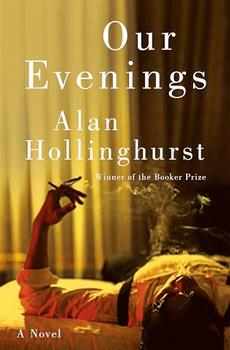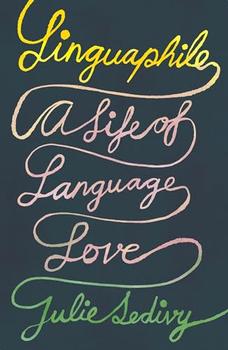Summary | Excerpt | Reviews | Beyond the Book | Readalikes | Genres & Themes | Author Bio

A Life in Six Masterpieces
by Miles J. Unger
III. IN THE GARDEN
If Michelangelo's initiation into the world of art turns out to have been more prosaic than he claimed, the next phase of his career has become the stuff of legend. For two years Michelangelo learned the rudiments of his craft in Ghirlandaio's studio, working alongside Francesco Granacci as the studio cranked out portraits, devotional paintings, and the large-scale fresco series for which the shop was famous. At the time, the Ghirlandaio brothers were at work on frescoes in the Dominican Church of Santa Maria Novella, specifically the chapel of the Tornabuoni family depicting the lives of the Virgin and St. John the Baptist. While no one has successfully identified the hand of the young Michelangelo in the work, it is probable that the artist helped in such tasks as preparing the smooth coat of wet plaster that was to be painted on by the masters, and perhaps even composing some of the secondary figures and backgrounds. Though Michelangelo refused to admit his debt to his first master, he was fortunate to have this training to fall back on when he was commissioned to paint monumental frescoes of his own, summoning skills he claimed he never learned from a master he was reluctant to acknowledge.
Both Vasari and Condivi confirm the young Michelangelo's precocious talent, Condivi (rather inconsistently) claiming that Ghirlandaio was jealous of his abilities even though they ostensibly had no working relationship. Curiously, the two biographers agree that one of the young Michelangelo's greatest talents was as a forger. Not only did he make copies from drawings that the studio kept on hand for the edification of its young students, but, according to Vasari, "he counterfeited sheets by the hands of various old masters, making them so similar that they could not be detected, for, tinting them and giving them the appearance of age with smoke and various other materials, he made them so dark that they looked old, and, when compared with the originals, one could not be distinguished from the other." Emphasizing his skill in mimicking the work of others fits awkwardly into a narrative that was meant to highlight Michelangelo's originality, but stories of a neophyte putting the master to shame is a common motif in Vasari's work. In his life of Leonardo, Vasari recounts that Andrea Verrocchio was so startled upon first seeing his young pupil's efforts that he never painted again, "dismayed that a child knew more than he." Similarly, Vasari claimed to have in his possession a drawing by Ghirlandaio to which Michelangelo had made a few judicious alterations, "showing the excellence of a mere lad who was so spirited and bold, that he had the courage to correct the work of his master."
Beating the master at his own game was, in fact, almost a rite of passage for the aspiring genius. One doesn't need to accept Condivi's dismissive account of Ghirlandaio's contribution to believe that Michelangelo quickly learned all he could from that pleasing but uninspired master. After only two years in the Ghirlandaio shop, the fifteen-year-old painter's apprentice was looking for new horizons to conquer. Happily, at the very same moment Florence?'s leading citizen, Lorenzo Il Magnifico, was combing the studios of the city in search of talented artists willing to learn the sculptor's craft by studying in his garden filled with ancient statues. Vasari explained Lorenzo's motives: "Given the great love he had for both painting and sculpture, he despaired that in his time one could not find famous or noble sculptors to equal the many great painters of note, and so he determined . . . to create a school."
Few episodes in the history of art have stirred as much debate. Some scholars have sought to diminish the significance of this so-called school of sculpture, insisting it was little more than an informal gathering of dilettantes with no real program; others have gone even further, claiming that the myth of Lorenzo's sculpture garden was invented out of whole cloth by Vasari himself as a means of flattering another Medici, his patron and Lorenzo's distant relative, Duke Cosimo de?' Medici. Contemporary documents, however, confirm its existence. Not only did Michelangelo recall the time he spent there with great affection, but the garden itself, located off the Piazza San Marco near the Medici Palace, was marked as a notable site on a map made by one Piero del Massaio. It is even possible to trace the origin of Lorenzo's project to a specific moment in 1489 when the Duke of Milan wrote to the ruler of Florence requesting help with the bronze equestrian statue of his father. Much to his chagrin, Lorenzo was forced to admit, "I cannot find any master who satisfies me . . . and this pains me no end." Lorenzo was acutely aware of how much Florence?'s prestige in the world depended upon its reputation as a home for the muses, and his inability to honor Duke Sforza's request must have spurred him to action. Offering up his vast collection of ancient and modern statuary as models and using his clout to persuade the leading masters to lend some of their most promising students, Lorenzo set out to reverse the decline of an art form that had once been the pride of Florence.
Excerpted from Michelangelo by Miles J Unger. Copyright © 2014 by Miles J Unger. Excerpted by permission of Simon & Schuster. All rights reserved. No part of this excerpt may be reproduced or reprinted without permission in writing from the publisher.




Be sincere, be brief, be seated
Click Here to find out who said this, as well as discovering other famous literary quotes!
Your guide toexceptional books
BookBrowse seeks out and recommends the best in contemporary fiction and nonfiction—books that not only engage and entertain but also deepen our understanding of ourselves and the world around us.